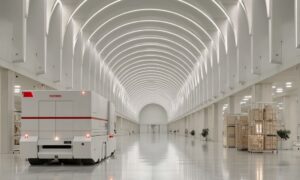Stainless Steel in Aerospace Industry: Advantages and Applications
Stainless steel is famous for industrial use. The use of steel is widespread across many industries. However, its incorporation in aerospace technology brings with it an additional value due to the unique properties of one particular type – namely, that of the corrosion-resistant and durable qualities present in ‘stainless’ steel. Therefore, this article will explore these advantages and examine how they are applied within the aerospace sector.
Advantages of Stainless Steel in Aerospace Industry
The aerospace industry benefits greatly from the unique characteristics of the versatile material, known as stainless steel. It is highly resistant to corrosion, can manage high temperatures and pressure while also boasting an impressive strength-to-weight ratio – all of which makes it a suitable choice for engine parts, fasteners and structural elements. In addition to this, many cabin interiors and exteriors are built with panels and fittings made of this material due to its durability and resistance against wear. Additionally, its non-magnetic nature makes it a perfect fit for aircraft instruments and electronic components alike. Thusly, by providing superior materials for reliable performance in aircrafts, stainless steel proves itself a crucial component in the aerospace industry.
Which stainless steel is used in aerospace industry?
Stainless steel is a common material used in aerospace engineering and it is referred to as “aerospace-grade stainless steel”. Of these, 15-5 PH stainless steel, otherwise called UNS S15500 or XM-12, is a popular option. This specific alloy includes 15% chromium, 5% nickel, 3% copper and a tiny bit of molybdenum, leading to its remarkable strength and toughness. Additionally, it has excellent rust resistance and can be formed into different shapes. It can be seen in various aerospace applications such as structural parts of aircrafts, engine pieces and landing gears.
The Durability of Stainless Steel in Extreme Aerospace Environments
Due to its robust nature, aerospace engineers have turned to the use of steel when confronted with extreme environments. This metal is known for its strength-to-weight ratio, and it has the capacity to stand up against high and low temperatures in addition to boasting impressive corrosion resistance. In space, where radiation levels can be high, this material has shown particular efficacy as it does not rust or discolor easily. Thus, in some areas of aerospace engineering, steel remains the preferred material choice due to these unique advantages.
How Stainless Steel is Enabling Innovation in Aerospace Engineering?
Aerospace engineering has been substantially revolutionized by the use of stainless steel. This metal offers a range of advantages such as its high strength-to-weight ratio, outstanding corrosion resistance and propensity to endure very low or high temperatures. As a result, it is being used for multiple purposes in aircraft production. Heat exchangers made from this material have been created to recapture waste heat from space vehicles and reformulate it into usable energy. Furthermore, alloyed forms of the metal are employed in the making of hydrogen fuel cells which can supply power to spacecrafts as well as long distance missions by supplying renewable energy sources.
The Power of Stainless Steel?
Stainless steel is an extraordinary material that has a multitude of properties, making it hugely valuable for numerous uses. Its remarkable resistance to corrosion and ability to keep up with high temperatures, combined with its remarkable strength-to-weight ratio, make it invaluable to modern engineering and manufacturing.
What is the cost of aerospace-grade steel?
When it comes to aerospace-grade steel, a purchaser can expect to pay anywhere between $3 and $10 per pound. It’s important to remember that this range is ever-changing, as market prices evolve in response to various factors. Therefore, depending on what year it may be, these costs could either be more or less than anticipated.
Conclusion
In the aerospace industry, numerous applications for the use of steel have been discovered due to its attractive features. The strength, corrosion and heat resistance, and sturdiness of this material make it a great choice for aircraft components such as structures, engine parts, fasteners, and fuel system pieces. Thanks to the incorporation of steel in aerial vessels, they are now safer, more reliable, and long-lasting than ever before.



































